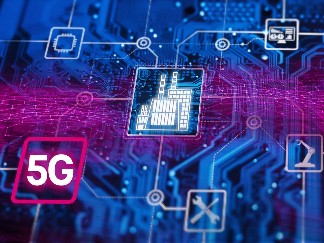
5G Enhanced Mobile Broadband (eMBB) is one of the key use cases defined in the 5G technology framework. It focuses on providing high-speed mobile broadband connectivity to users, significantly improving the user experience for mobile internet services. Here are some of the critical aspects of eMBB:
High Data Rates: eMBB aims to deliver peak data rates of up to 20 Gbps and average data rates of several hundred Mbps, significantly higher than previous generations (like 4G LTE).








Improved Capacity: With its ability to handle a vast number of devices simultaneously, eMBB can enhance network capacity, allowing more users to enjoy high-speed services without degradation.
Low Latency: eMBB targets ultra-low latency, enhancing real-time applications like video streaming, gaming, and VR/AR experiences.
High Reliability: The technology is designed to ensure consistent and reliable connections, which are essential for applications requiring uninterrupted service.
Wide Coverage: eMBB aims to extend coverage areas, ensuring that high-speed mobile broadband is available to users in both urban and rural settings.
Video Streaming: Support for high-definition (HD), 4K, and even 8K video streaming with seamless playback and minimal buffering.
Virtual Reality (VR) and Augmented Reality (AR): Enhanced mobile broadband supports more immersive VR and AR experiences by enabling high data transfer rates needed for rendering complex environments in real-time.
Smartphones and Tablets: Providing faster internet speeds for users engaging in everyday tasks like browsing, gaming, and social media.
Mobile Hotspots: Enabling devices to serve as mobile hotspots to share high-speed internet with other devices, facilitating remote work and on-the-go connectivity.
Connected Devices and IoT: Supporting a range of consumer devices that require high-speed internet to function properly, enhancing the overall smart home experience.
New Spectrum: 5G eMBB utilizes a variety of frequency bands, including sub-6 GHz and mmWave frequencies, which allow for higher capacity and faster speeds.
Advanced Technologies: Techniques like Massive MIMO (Multiple Input Multiple Output), beamforming, and network slicing are employed to maximize efficiency and performance.
Deployment Models: eMBB can be deployed in various models, including standalone (SA) and non-standalone (NSA), with NSA relying on existing 4G infrastructure for initial rollout.
5G eMBB represents a significant leap forward from previous mobile broadband technologies, aiming to meet the growing data demands of users and enabling new applications and services. It plays a crucial role in moving towards a more connected and digital world, enhancing user experiences across various domains.


Leave a Reply